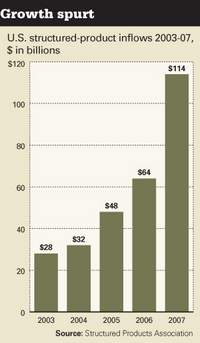by Avinash Persaud
It was a brave decision. By abandoning Lehman Brothers, a 158-year-old piece of Wall Street furniture, and refusing to remove their hands from their pockets when Merrill Lynch came calling, US Treasury Secretary Hank Paulson and New York Fed Governor Tim Geithner had one of the busiest weekends of dispassion on record. There will be much fall-out in financial markets over the next few weeks and even more uncertainty.
Two questions come immediately to mind. Why give guarantees to JPMorgan to help it to buy Bear Stearns in March 2008 but decline to do so six months later for Lehman Brothers, a larger institution? Second, will Lehman’s bankruptcy make financial conditions better or worse? There is rhyme to the reasoning behind saying no to Lehman Brothers and while things will get worse over the short-term, the alternative may have been the same pain, drawn out for longer.
There were reasons for saying no to Lehman that were not there for Bear. First, there is the distinction between solvency and liquidity. The liquidity arrangements the Fed put in place after the Bear Stearns collapse means that institutions that fail now are more likely to have a solvency problem than a temporary liquidity issue. The policy mistake that contributed to a decade of missing growth in Japan in the 1990s was allowing insolvent institutions to limp along, while praying for a revival in market prices that never came.
Second, there is the issue of moral hazard. While central banks have been offering liquidity on generous terms and stopping institutions from going bankrupt, some banks were not engaged in hard restructuring, but gaming the system. They were busy hoarding liquidity and pushing risky instruments into the hands of the authorities. Why did it take the edge of bankruptcy for Lehman to draw up plans to hold $30bn of hard-to-sell commercial property assets into a separate entity? The situation was complex and changing but bankers will recognise today that the game is not about luring sovereign wealth funds to invest before markets recover, but how to restructure for a brave new world in which the financial sector is smaller.
Third, there was a new and alarming factor not present at the time of Bear that argued strongly against new government guarantees. Since the August rescue of Freddie Mac and Fannie Mae, credit markets have begun to price in the possibility of a default by the US government – the implied probability remains a fraction of 1 per cent but it is an unprecedented development.
Finally, there is the systemic risk. Bankers always argue that if they are not redeemed of their sins that hell and damnation will fall upon the rest of us. This normally works. When Bear Stearns was tottering on the edge, it was argued that as it was the leading investment bank in the mortgage business, letting it fail would spread woe from the cloisters of banking to Main Street. The mortgage market still fell apart and a large chunk of it – Freddie and Fannie – has in effect been nationalised. Officials may have felt that the failure today of Lehman, an institution not heavily involved in residential mortgage lending, was not going to make much difference.
There will be systemic fall-out from the Lehman bankruptcy, however.
For the complete analysis from FT.com, click here.
Monday, September 15, 2008
Subscribe to:
Post Comments (Atom)




No comments:
Post a Comment